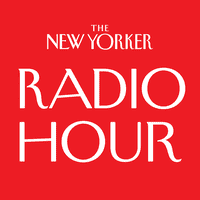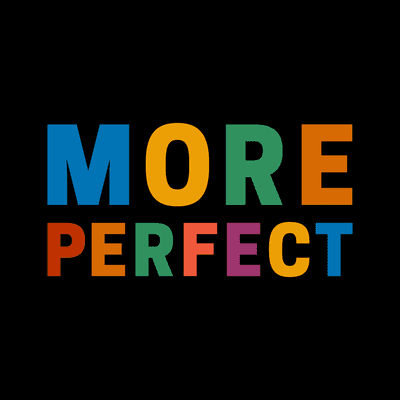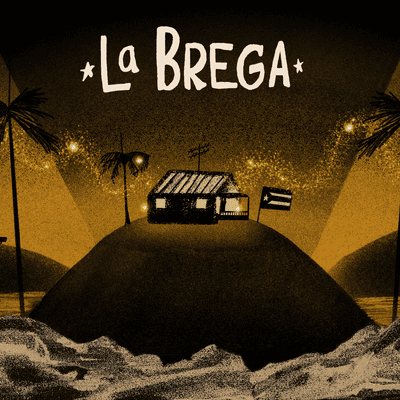How to Buy Forgiveness from Medical Debt

[music]
Announcer: The rise in healthcare costs and the crushing medical debts that follow from that are a problem that long predates COVID, although the pandemic certainly contributed. It long predates the recent trend toward inflation, too. For so many Americans, the stream of late notices and threatening voicemails never quite ends. Two former debt collectors got together to try to tackle the problem from a very unexpected direction.
Staff writer Sheelah Kolhatkar, who covers business and finance for The New Yorker, looked at how one small church in North Carolina erased more than $4 million of other people's debts. Here's Sheelah.
Sheelah Kolhatkar: RIP Medical Debt was founded in 2014 by two former debt collection executives. It's based in New York, and the organization gathers up contributions and donations, and uses them to buy out bundles of outstanding medical debt, and then pays off that debt, which can have life-changing consequences for some of the people who owe money for medical bills.
In order to try and understand this a little better, I spoke with Reverend John Jackman, the pastor of Trinity Moravian Church in North Carolina. Tell me about Trinity Moravian Church and the community where you serve.
Reverend John Jackman: Trinity Moravian Church is a little over 100 years old. Our church is absolutely an average size church. If you take the average attendance or churches across the country, there are really very few mega churches. Most churches are attendance of under 100, and we're around 75 or 80 on a Sunday. If you draw one-mile circle around the church, the population is one-third Black, one-third white, one-third Latino. At the turn of the century, I'm talking about going into 2000, the neighborhood was in decay. We had crack houses a block from the church. The congregation wrestled with whether or not to sell the building and move out to the suburbs and build a new church the way many congregations have, the city congregations have. They voted overwhelmingly that they wanted to stay and minister to their neighborhood. The commitment's very deep.
Sheelah Kolhatkar: How did you first hear about RIP Medical Debt?
Reverend John Jackman: I had read about it before the pandemic, and I thought, "Oh what a genius idea," and during the pandemic, all of a sudden we were facing the possibility with COVID of many people with medical bills that they couldn't pay. What we did was we set up an account with RIP Medical Debt specifically for our area. We had them do a survey of our counties. The area here is North Carolina Triad--Greensboro, Winston-Salem, High Point area. We had them do a survey of all the counties in this area to see how much debt was available for purchase.
Then we set up a campaign to raise the approximate amount of money they think it will take to buy the debt at wholesale. The first time we did it, our board said, "Let's try this." We needed to raise $5,000. Our board said, "Look, let's try it. See if we can raise five grand and see what happens." The level of interest was so high when we hit the $5,000 fundraising mark. We went back to RIP Medical Debt, and they went to auction, and they were able to buy $1.2 million in medical debt in this area with that money-
Sheelah Kolhatkar: Wow.
Reverend John Jackman: -and helped about 1,000 families. This was just astonishing. I don't know how many times I had to explain to our members again and again how it was we were able to buy this staggering amount of debt with this little amount of money, but also RIP Medical Debt then they will generate letters to each household, explaining what has happened and that the debt has been purchased and then forgiven. It's removed from the credit report. It's just wiped out.
Sheelah Kolhatkar: It sounds like a lot of your conversations now revolve around medical debt. Is this something you ever imagined would happen to you as a pastor?
Reverend John Jackman: No, we had no idea. We have undertaken a number of projects in the past, but there's never been anything quite like this. I just went to a store yesterday to buy something for the church, and the lady looked at the credit card and said, "Oh, you have a church that buys the medical debt." I've never met her before. [laughs] That happens all the time now.
Sheelah Kolhatkar: After I talked with Pastor John, I spoke with Allison Sesso, who became the president, and CEO of RIP Medical Debt in 2020. How much debt has RIP Medical Debt abolished overall?
Allison Sesso: We're inching closer to $9 billion helping over 5 million people.
Sheelah Kolhatkar: Before we jump right into it, can you explain a little bit about how did RIP Medical Debt come into being?
Allison Sesso: There are people in the world that are debt buyers. What they do is they go out to the world, and they try to buy various kinds of debt. It's medical debt, it's electrical bills, it's all kinds of debt.
Sheelah Kolhatkar: Mortgages?
Allison Sesso: Exactly. All these kinds of things. They try to buy that debt, and then in order to make a profit, they have to buy it for super cheap, because what they're doing essentially is making a bet. They're saying, "Okay, I'm going to put this investment in. I'm going to buy this debt on the chance that I'm going to collect some of it from some people." The people don't have to necessarily-- you can cut deals with people. Because you paid pennies on the dollar. If someone owes $10,000, you can cut a deal that they owe you too, and you're up still for that particular debt. In order for this whole thing to become profitable for an entity, they have to make sure that they're pricing it super dirt cheap because the majority of people, especially with medical debt, can't pay.
Sheelah Kolhatkar: Who qualifies to get help from your organization?
Allison Sesso: Yes. We're actually totally blind to any attributes of the individual beyond their income situation. We look at their income, and if they are 400% of poverty or below, they will qualify. Or if the debt is 5% or more of the person's individual income. The reason why we picked that number is people within that range struggle. They don't qualify for Medicaid. They don't qualify for a lot of the subsidies. The medical part of their budgets is where they struggle the most.
Sheelah Kolhatkar: That makes sense. Once you explain the context of the people below a certain point are covered by Medicaid, so one would assume they're much less likely to-
Allison Sesso: They are. Yes. That's right.
Sheelah Kolhatkar: -be experiencing medical debt, everything that they do has to be--
Allison Sesso: For the most part. Yes. We buy that data, and then we do an analysis and everyone that qualifies, we will pull all those people out. We will match the donation to those debts, and we will send letters out to all of those individuals and say, "You have had your debt abolished. You do not have to take any action." They do not have to take any action on the outset or anything until they get that letter. They don't even know that this happened. We encourage them to come back to us and tell their stories. That's part of what we want to do. We want people to break this intense feeling that they did something wrong, and to point to the system through storytelling.
Sheelah Kolhatkar: I was curious to know who the donors are to your organization. What can you say about that?
Allison Sesso: Churches obviously are significant. Lots of individuals, a lot of donations are small in nature. Sometimes there are people who we've helped who pay it forward and give us $10. Individuals do crowdsourcing campaigns that they stand up. They can either do it on Facebook, or they'll join a race and do a run and raise some money from their friends and family. We also have corporations who give to us as corporate social responsibility.
Sheelah Kolhatkar: It's very odd this idea that these debts are trading so cheaply. It is astonishing when you look at how much money you can raise and then how many millions of dollars of medical debts can be retired. Why is that?
Allison Sesso: It's because the people who owe the debts can't pay. The debt buyers know that. Medical debt, you have way less control over. You just don't have the ability to sign on the bottom line. You're sick, you go to the hospital, and your insurance situation is what it is at the time that you go.
Sheelah Kolhatkar: Plenty of people with insurance end up with big medical debt.
Allison Sesso: That's right. You're out of network or the doctor-- you don't know you're sick. I think that that's the thing. The majority of people that are in these portfolios are people who are 400% of poverty or below, which is why we are able to qualify them. The chances of them being able to pay are very low. That naturally pushes down the price because again, the bet that the debt buyer is taking is that they'll be able to recoup it. You can't get blood from a stone. [laughs]
Sheelah Kolhatkar: It's a bit of a gamble that the debt buyer's making that maybe some small number of these people will repay. Basically, it reflects the fact that these debts are almost worthless because they're probably not going to get paid out.
Allison Sesso: That's right. They do hope that people with financial situation will change, and unfortunately, some of them, they'll put them on payment plan so people are paying like $100 a month or they're trying to get their way out of this. They can take their assets. They could take them to court. They could have judgments on them. People will lose their houses, their cars, they'll have their wages garnished. There's some real tactics that they could use once they own the debt as can hospitals to recoup this loss, which is really the part that is really problematic, I think at the end of the day.
Sheelah Kolhatkar: The first time I heard about RIP Medical Debt, I thought, "Wow, this is really innovative, like a Kickstarter campaign for people's medical bills." It's really clever the way they're combining data analytics with their knowledge of the debt markets and using that to really help people. On the other hand, the fact that we need a Kickstarter system for people to pay off medical bills is very disturbing. It's a sign of just how broken the healthcare system is here. It's really a band-aid solution. It is trying to address problems all the way at the end of the line rather than addressing the systemic problems that caused the whole situation in the first place.
Reverend John Jackman: One of the interesting things is I've done interviews with several international papers because the rest of the world looks at us and says, "How come you haven't figured this out yet?" [chuckles] They're baffled by this idea that people could be so burdened by medical debt because it doesn't happen in other industrialized countries.
Sheelah Kolhatkar: Well put. The concept of forgiveness of debt has deep roots throughout the Bible, and I wondered- [crosstalk]
Reverend John Jackman: Yes, indeed.
Sheelah Kolhatkar: -as a Christian pastor, what is the significance of this idea of forgiving debt?
Reverend John Jackman: I think people forget that. If you go back into Leviticus in the Old Testament, there are a lot of laws about how you treat the poor, about how you treat the stranger, how you treat the sojourner who's crossing over your land. There are rules for people in terms of not harvesting all the food, so to leave some of the food in the field for the poor.
There's a section that we based our name on about the day of Jubilee, which was a special day every 50th year that all debts were to be forgiven. Slaves were to be freed. It was to be an entire cultural reset. We don't know if that ever really happened historically, but it is spelled out in Leviticus, and we use that as the model. We're going in for families that we know cannot deal with these things. We are taking the weight off of them.
[music]
Sheelah Kolhatkar: Pastor Jackman, thank you so much for being here.
Reverend John Jackman: Thank you so much, Sheelah.
Announcer: The New Yorker, Sheelah Kolhatkar speaking to Pastor John Jackman of Trinity Moravian Church in Winston-Salem. Sheelah also talked with Allison Sesso of RIP Medical Debt.
[music]
Copyright © 2023 New York Public Radio. All rights reserved. Visit our website terms of use at www.wnyc.org for further information.
New York Public Radio transcripts are created on a rush deadline, often by contractors. This text may not be in its final form and may be updated or revised in the future. Accuracy and availability may vary. The authoritative record of New York Public Radio’s programming is the audio record.





